
Helsinki is the capital and most populous city in Finland. It is located on the shore of the Gulf of Finland and serves as the seat of the Uusimaa region in southern Finland. Approximately 0.67 million people live in the municipality, with 1.25 million in the capital region, and 1.58 million in the metropolitan area. As the most populous urban area in Finland, it is the country's most significant centre for politics, education, finance, culture, and research. Helsinki is situated 80 kilometres (50 mi) to the north of Tallinn, Estonia, 360 kilometres (220 mi) to the north of Riga, Latvia, 400 kilometres (250 mi) to the east of Stockholm, Sweden, and 300 kilometres (190 mi) to the west of Saint Petersburg, Russia. Helsinki has significant historical connections with these four cities.

Finland attracted over 6.8 million foreign tourists in 2018, with 53 percent coming from other European Union states. In 2017, the value added by tourism was about 4.6 billion euros, or 2.6% of the Finnish GDP, providing approximately 140,200 jobs.

Lahti is a city in Finland and the regional capital of Päijät-Häme. It is located in the Finnish Lakeland. The population of Lahti is approximately 121,000, while the sub-region has a population of approximately 204,000. It is the 9th most populous municipality in Finland, and the sixth most populous urban area in the country.

Töölö is the collective name for the neighbourhoods Etu-Töölö and Taka-Töölö in Helsinki, Finland. The neighbourhoods are located next to the city centre, occupying the western side of the Helsinki Peninsula.
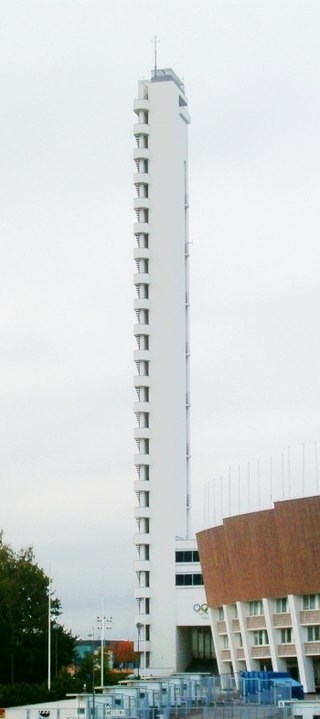
In architecture, functionalism is the principle that buildings should be designed based solely on their purpose and function. An international functionalist architecture movement emerged in the wake of World War I, as part of the wave of Modernism. Its ideas were largely inspired by a desire to build a new and better world for the people, as broadly and strongly expressed by the social and political movements of Europe after the extremely devastating world war. In this respect, functionalist architecture is often linked with the ideas of socialism and modern humanism.
The year 1936 in architecture involved some significant events.

Katajanokka is a neighbourhood of Helsinki, Finland, with around 4000 inhabitants in 2005. The district is located adjacent to the immediate downtown area, though in the first major town plan for Helsinki from the mid-18th century, the area fell outside the fortifications planned to encircle the city.
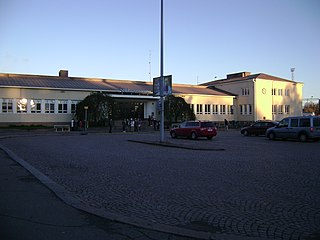
Riihimäki is a town and municipality in the south of Finland, about 69 kilometres (43 mi) north of Helsinki and 109 kilometres southeast of Tampere. An important railway junction is located in Riihimäki, since railway tracks from Riihimäki lead to Helsinki, Tampere and Lahti. Several businesses also operate in Riihimäki. Notably, Würth Oy has its Finnish headquarters and logistics center in Riihimäki. Valio has a major dairy in the Herajoki part of Riihimäki. The famous Sako rifles are also produced in Riihimäki. Riihimäki also has the second-highest flagpole in Finland.

The Helsinki Olympic Stadium, located in the Töölö district about 2.3 kilometres (1.4 mi) from the centre of the Finnish capital Helsinki, is the largest stadium in the country, nowadays mainly used for hosting sports events and big concerts. The stadium is best known for being the centre of activities in the 1952 Summer Olympics. During those games, it hosted athletics, equestrian show jumping, and the football finals.

Viljo Gabriel Revell was a Finnish architect of the functionalist school. In Finland he is best known for the design of the Lasipalatsi and Palace Hotel, both in Helsinki. Internationally, Revell is best known for designing the New City Hall of Toronto, Ontario, Canada.

Tikkurila is a district and major region of the municipality of Vantaa, Finland. Located in the eastern half of the Helsinki conurbation, some 16 kilometres (10 mi) north of the capital's downtown district, it is the administrative and commercial hub of Vantaa, although Myyrmäki is a rival commercial hub within the municipality.

Tennispalatsi, is an enclosed cultural and recreational center in Kamppi, Helsinki, Finland. It houses a Finnkino multiplex movie theatre, the Helsinki City Art Museum, the Museum of Cultures, and small shops.
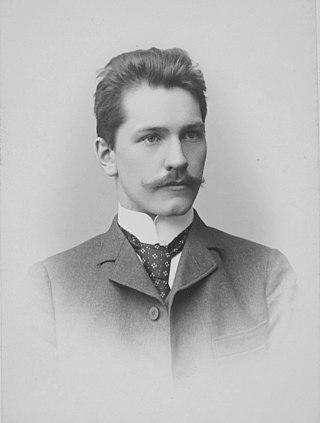
Uno Werner Ullberg was a famous Finnish architect.
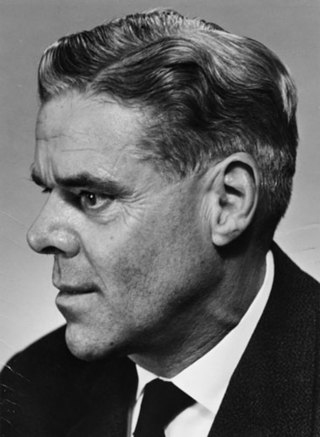
John Birger Jarl Carlstedt was a Finnish painter and a pioneer of Modern Art in Finland. His painting style went through various changes, with influences from Impressionism, Expressionism, Futurism and abstract art.

Stockmann Helsinki Centre is a culturally significant business building and department store located in the centre of Helsinki, Finland. It is one of many department stores owned by the Stockmann corporation. It is the largest department store in the Nordic countries in terms of area and total sales. The store is known for carrying all the internationally recognised luxury brands, and Stockmann's enjoys a reputation as the primary high-end department store in Finland. Stockmann Delicatessen, the food and beverage department located at the basement level, is renowned for the quality and choice of its foodstuffs. The Stockmann logo represents a set of escalators, which are commonly, but wrongly believed represent the first escalators in Finland. The first escalators in Finland were installed in the Forum department store, Turku (1926).

Amos Rex is an art museum named after the publisher and arts patron Amos Anderson and located in Lasipalatsi, on Mannerheimintie boulevard in Helsinki, Finland. It opened in 2018 and rapidly reached international popularity, attracting more than 10,000 visitors in a matter of weeks.

Luckan is a network of Finland-Swedish cultural centres in Finland. Currently, there are located in 11 cities and towns in Finland: Helsinki, Kirkkonummi, Kokkola, Kristinestad, Närpes, Porvoo, Karis in Raseborg, Tampere, Turku and Oulu.
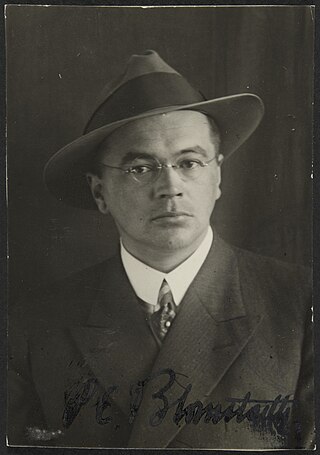
Pauli Ernesti Blomstedt, more commonly known as P. E. Blomstedt, was a Finnish architect and designer, who worked first in the Nordic Classicism style and then turned to Functionalism. Both his father, Yrjö Blomstedt, and younger brother, Aulis Blomstedt, were also well-known architects.

JKMM Architects is a Finnish architectural firm. Asmo Jaaksi, Teemu Kurkela, Samuli Miettinen and Juha Mäki-Jyllilä established JKMM Architects in 1998. They started their studies in the middle of eighties. From the beginning, architectural innovation has been the driving force of their work. Studio's design approach reflects Scandinavian values and aesthetics. Their goal is to make architecture with exceptional architectural and technical quality. Over the years JKMM has grown and it employs over 80 professionals. They operate actively in various areas and scales of architecture designing buildings, interiors, furniture, urban environments as well as renovations.
Märta Blomstedt (1899–1982) was an architect and one of the driving forces of the Finnish functionalism movement. Partnering with her husband, Pauli E. Blomstedt, her first works were noted for their functional, rather than decorative appearance and settings in park-like environments. After her husband's death, initially she formed a firm with Matti Lampén to complete projects her husband and she had begun. Later, she and Lampén formed a firm designing their own creations. She designed all aspects of her buildings including the furnishings, demonstrated in one of Blomstedt & Lampén's most noted designs of the Hotel Aulanko. During the war, Blomstedt & Lampén mostly worked on renovation and restoration projects of existing buildings, but at the war's end, they returned to their own designs. In addition to buildings, they were responsible for the city plans for Kuusjärvi and the Oravikoski Mining Community and created both public and private buildings in each city as well. When Lampén died, Blomstedt formed a partnership with Olli Penttilä and continued to work into the 1970s.





















